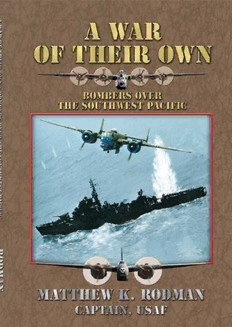
A War of Their Own: Bombers Over the Southwest Pacific PDF
182 Pages·2005·4.149 MB·English
Most books are stored in the elastic cloud where traffic is expensive. For this reason, we have a limit on daily download.
Preview A War of Their Own: Bombers Over the Southwest Pacific
Description:
This work attempts to present an accurate account of the nature of the air war in the Southwest Pacific during World War II, focusing mainly upon the Fifth Air Force. The study does not presume to be an all-encompassing operational summary; instead, it aims to provide a representative picture of American bombardment in that area. This was a moment in history when combat air power played a key role in achieving victory. The author recounts how the Fifth Air Force quickly developed new tactics and procedures that "saved the day." The perfection of low-altitude bombing, strafing, and skip bombing made differences that in hindsight are easy to recognize and quantify. Without them the Fifth would have found itself in a longer, costlier fight with an uncertain outcome. However, these new tactics hurt the enemy to the extent that the Allies eventually prevailed. The real value of this study lies not so much in its retelling of significant developments in air power as in its pushing the need for the military to be flexible, adaptive, opportunistic, and entrepreneurial while safeguarding core values and capitalizing on core competencies. Many components determine success -- preparation, resources, knowledge, and determination to name a few. But none of these have nearly the importance of the creative ability to adapt effectively to confront the threat and deliver victory.
See more
The list of books you might like
Most books are stored in the elastic cloud where traffic is expensive. For this reason, we have a limit on daily download.
